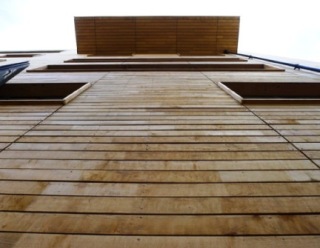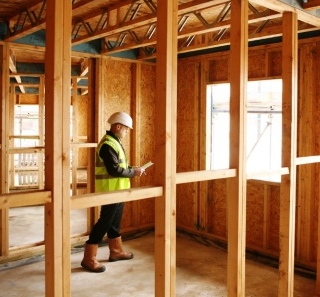In a letter to Stephen Williams MP, the UK Timber Industry Accord expressed its deep concerns to government that the appropriate incentives will not be in place in to encourage the selection of inherently sustainable and low Carbon building materials.
 In embarking on the next stage in implementing Zero-Carbon Homes from 2016, the government recognises that it will not always be cost-effective or technically feasible for house builders to reduce all carbon emissions through on-site measures like fabric insulation, energy efficient services, and/or renewable energy generation.
In embarking on the next stage in implementing Zero-Carbon Homes from 2016, the government recognises that it will not always be cost-effective or technically feasible for house builders to reduce all carbon emissions through on-site measures like fabric insulation, energy efficient services, and/or renewable energy generation.
The Accord is worried that if the current pathway to Zero-Carbon Homes does not support the use of materials with low embodied carbon, this may lead to selection of sub-optimal solutions to avoid paying a levy when accounting for embodied carbon would have yielded better results. Embodied carbon is the carbon emitted in the production and construction of a building, rather than in its operation.
 The letter noted the benefits of using wood products and that every cubic metre of wood used reduces CO2 emissions to the atmosphere by an average of between 1-2.5 tonnes compared with other materials, with roughly 0.9 tonnes of CO2 are absorbed and stored in, removing this from the atmosphere for the duration of the products physical lifespan.
The letter noted the benefits of using wood products and that every cubic metre of wood used reduces CO2 emissions to the atmosphere by an average of between 1-2.5 tonnes compared with other materials, with roughly 0.9 tonnes of CO2 are absorbed and stored in, removing this from the atmosphere for the duration of the products physical lifespan.
Recognition of the importance of embodied Carbon is growing rapidly among the construction industry’s major players. The RICS is lobbying the government to introduce compulsory monitoring of the embodied carbon in new buildings using a new methodology that it has developed alongside a raft of top construction firms such Faithful + Gould, Arup, Mott Macdonald, Gleeds, Skanska, Laing O’Rourke, Aecom and Derwent London. In addition to this organisations such as BAM, Wilmott Dixon and RIBA have been engaging with the embodied Carbon debate through initiatives such as Embodied Carbon Week.
BWF Policy Executive Matt Mahony commented:
"It should be crystal clear that incentivising the use of low energy products which lock up Carbon long-term will open up a better range of cost-effective and technically feasible options which house builders may support to achieve the Zero-Carbon Homes Standard.
"Bringing embodied Carbon into the Allowable Solutions framework is a way to do this, and if this is ignored then there is a real risk of falling further behind our European competitors in an area that many major players in the UK Construction sector are now beginning to engage with.
"The government doesn’t need to be dragging its heels when so many forward-thinking industry organisations are presenting a workable solution to sector challenges such as Zero Carbon Homes. Indeed, these are answers which can only help build towards the 50% reduction in greenhouse gas emissions by 2025 that government and industry targeted in the recent Construction Strategy."
The Queen’s speech in June will need to cover the requirements for primary legislation for Allowable Solutions to enable introduction ahead of the general election in 2015.